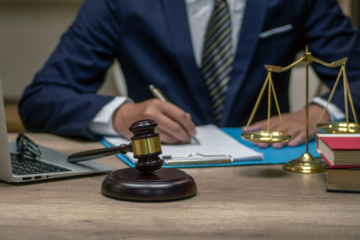Being involved in a rear-end car accident can be a traumatic experience. Dealing with car damage and medical bills can be overwhelming for even the strongest people.
Here are some tips to help you prove fault if you are struggling with determining fault in a rear-end car accident.
- Determine Whether They Were Distracted
Driving when distracted may be the most common reason for rear end accidents on the road. Whether the other driver was using their phone or looking away from the road, their negligence can cause a significant loss for you.
You can request cell records to see whether the driver was texting or calling someone at the time of the accident. In addition, you can also leverage eyewitness accounts to understand better and validate what caused the accident.
In addition, you can also consider locating any cameras in the location to show the rear driver’s actions leading up to the crash. All these bits of evidence can come together to strengthen your claim and help you find your compensation.
- Think About Lance Changes
When done with care, changing lanes causes no harm to the driver and others on the road. However, sudden lane changes can put everyone on the road at risk. If you were rear ended while stopped after a sudden lane change by the other driver, you can use this information to determine the driver’s fault.
You can strengthen your case even further if the other driver switches lanes without signaling or ensuring a safe distance. This proves that you may not have had enough time to react to the sudden shift and that their actions were reckless.
- Check for Skid Marks
You can also look at the road for skid marks to determine whether the other driver was at fault. Skid marks show that the driver who rear ended you tried to stop. It can be a crucial piece of evidence to strengthen your claim.
You can document the skid marks by taking their pictures. Make sure to record the length of these marks as well. These details can be crucial in determining the speed of the other driver or if they were not maintaining a safe distance.
- Ask for a Police Report
Among all the hustle and bustle, the most important thing you should not forget is to get in touch with the police. A police report is an official record of the accident that can help in establishing the other driver’s fault.
Make sure to request important details such as diagrams, witness statements, and any citations are added to the police report. The police’s verdict in your favor can positively influence your legal claims and proceedings ahead.
- Get Information from Witnesses
If you were rear ended on a busy road and many people saw the accident happen, it would be great for you. The more people see an accident, the more information you can get on exactly what happened. It can help you understand differing perspectives on the accident.
You can ask the witnesses for their names, addresses, and contact information to gather testimonies. These testimonies can support your narrative of how the accident occurred.
When multiple people state that they saw the same thing happen, you can feel confident about taking legal action and getting compensated for your losses.
- Take Pictures and Videos of the Vehicles
In addition to asking witnesses for their accounts of the accident, you must also take some time to gather evidence on your own. Pictures and videos of the damage to your car can be crucial in determining the fault of a rear-end accident.
It is essential to capture images or videos of the overall damage to both vehicles, focusing on the points of impact. Being a powerful mode of communication, pictures, and videos can make it clear to illustrate how the collision occurred.
In addition to taking pictures of the vehicle, make sure you also take photographs of road conditions, signage, and other environmental factors that may have contributed to the accident.
- Consult a Car Accident Lawyer
The evidence you gather and the witnesses you ask for help can be invaluable. However, the help of a car accident lawyer after getting rear ended while stopped can never be overlooked. These professionals and their skills can help you significantly strengthen your claim.
From medical records, police reports, and witness statements, they can help you gather all the necessary evidence to determine fault.
The best part about having a car accident lawyer by your side is that they can negotiate with insurance companies on your behalf. In case negotiation does not work, they can also guide you through the legal process and ensure that all necessary documentation is filed correctly.
- Consider the Traffic Volume
The traffic conditions in the area can significantly influence the likelihood of rear end collisions. It is an important factor that you must consider while gathering evidence to determine the fault of the other driver.
Even during rush hours, the drivers behind you must maintain a safe distance to ensure your safety. If they do not maintain a safe distance, sudden stops can increase the risk of crashing. This can also help determine the driver behind the wheel’s fault.
- Check the Rear Driver’s Speed
Lastly, the importance of speed cannot be overlooked in rear-end accidents. Drivers who unnecessarily speed, especially in bad weather or road conditions, can often get involved in rear ending car accidents.
You can ask the eyewitnesses about the speed of the rear vehicle. You can also gather evidence from traffic cameras to see how fast the other driver was traveling. It can help you determine the driver’s ability to stop safely without colliding with your vehicle based on their following distance.
You can also look for speed limit signs that may have been disregarded to clarify their responsibility in the accident further. This evidence can give you an upper hand during negotiations and navigating the legal processes.



